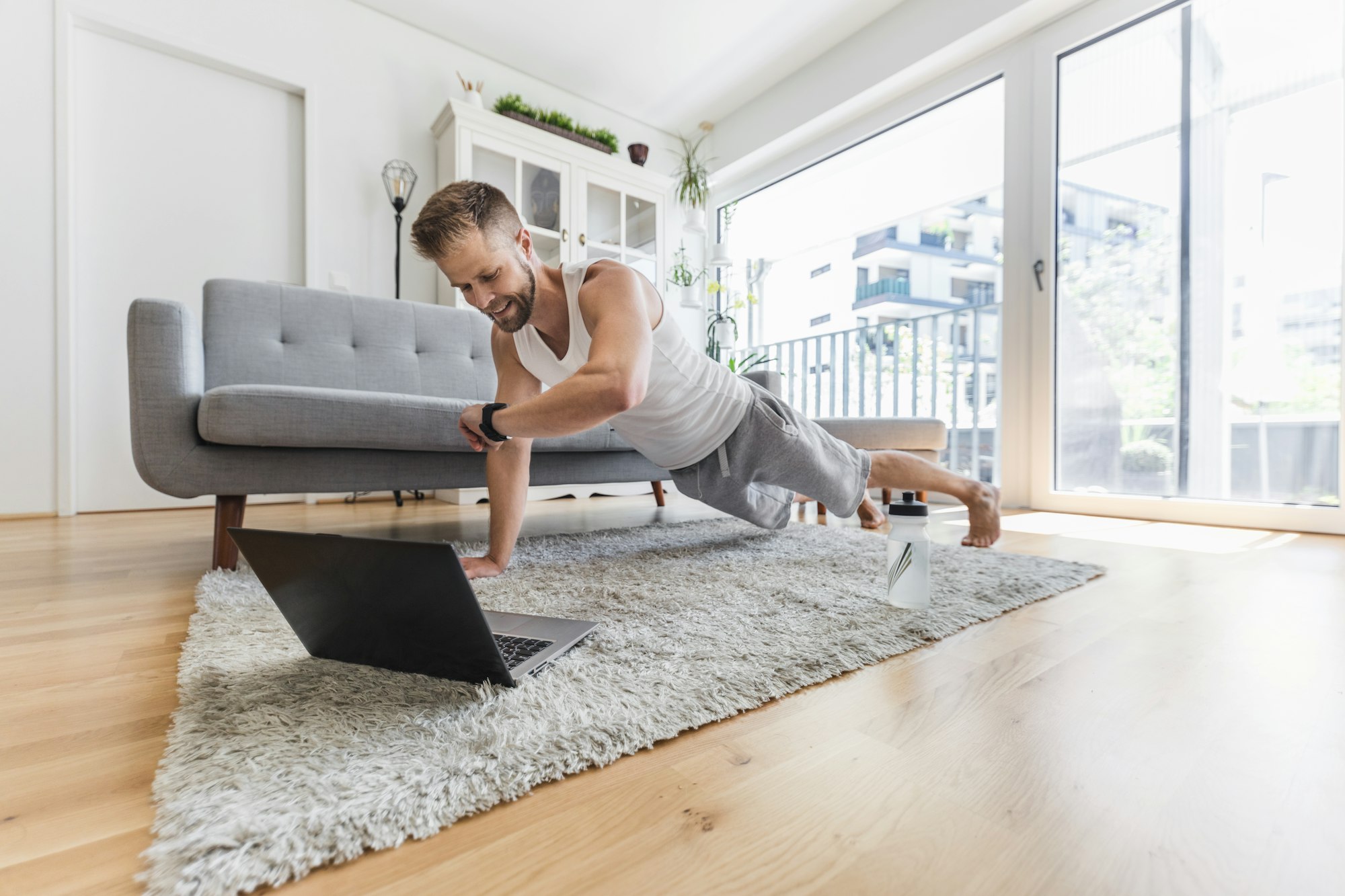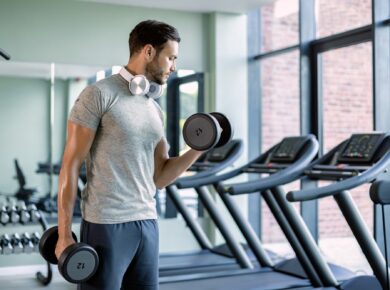Fitness is a universal concept, yet the approach to achieving it can vary widely among individuals. Adaptive workouts have emerged as a significant trend, emphasizing that fitness should be inclusive and accessible to everyone, regardless of their physical abilities or limitations. This article delves into the world of adaptive workouts, exploring their importance, types, benefits, and how you can incorporate them into your fitness routine to ensure everyone can enjoy the journey to better health.
1. Understanding Adaptive Workouts
1.1 What Are Adaptive Workouts?
Adaptive workouts are tailored fitness routines designed to meet the unique needs and abilities of individuals with various physical conditions. Unlike traditional workouts, which often follow a one-size-fits-all approach, adaptive workouts consider factors such as mobility limitations, chronic illnesses, and injuries. These workouts are highly customizable and can be adjusted to ensure that everyone, regardless of their physical condition, can participate in physical activity safely and effectively. The primary goal is to provide a safe, effective, and enjoyable way for all individuals to engage in regular exercise, promoting inclusivity in the fitness world.
1.2 The Evolution of Adaptive Fitness
The concept of adaptive fitness has evolved significantly over the years. Initially, fitness programs were largely generic, catering to the able-bodied majority. However, as awareness about inclusivity and diversity in fitness grew, so did the development of adaptive fitness programs. Today, adaptive workouts are recognized and integrated into mainstream fitness, with many gyms and fitness centers offering specialized classes and equipment to cater to individuals with different needs. The evolution signifies a positive shift towards a more inclusive fitness culture, where everyone, regardless of their physical capabilities, can pursue a healthy and active lifestyle.
2. Types of Adaptive Workouts
2.1 Chair Exercises
Chair exercises are a versatile and accessible form of adaptive workout, particularly beneficial for individuals with limited mobility or balance issues. These exercises can be performed while sitting or standing behind a chair for support, making them suitable for people with a range of physical conditions. Common chair exercises include seated marches, leg lifts, and arm circles. They help improve strength, flexibility, and cardiovascular health without the need for specialized equipment, making them an excellent option for home workouts or for those who prefer low-impact activities.
2.2 Water-Based Workouts
Water-based workouts, such as aqua aerobics and swimming, are ideal for individuals with joint pain, arthritis, or other conditions that make weight-bearing exercises challenging. The buoyancy of water reduces stress on the joints while providing resistance to help build strength and endurance. Water-based workouts can include activities like water walking, aqua jogging, and resistance training with water weights. These workouts are not only effective but also provide a refreshing and enjoyable way to stay active, particularly for those who may find traditional exercises uncomfortable or difficult.
2.3 Adaptive Yoga
Adaptive yoga modifies traditional yoga poses to accommodate individuals with physical limitations. Props such as blocks, straps, and chairs are often used to support participants in achieving the benefits of yoga, including improved flexibility, strength, and relaxation. Adaptive yoga can be practiced by individuals with various conditions, from spinal cord injuries to multiple sclerosis. The key is to adapt the poses to meet the practitioner’s needs, ensuring that everyone can experience the mental and physical benefits of yoga without strain or injury.
2.4 Resistance Band Training
Resistance band training is a highly adaptable and portable workout option that can be customized to suit various fitness levels and physical abilities. Resistance bands come in different resistance levels, allowing individuals to gradually increase the intensity of their workouts. Exercises can be performed while seated or standing, and bands can be anchored to provide additional stability. Resistance band training helps build muscle strength, improve joint stability, and enhance overall functional fitness, making it a versatile option for adaptive workouts.
3. Benefits of Adaptive Workouts
3.1 Improved Physical Health
Adaptive workouts offer numerous physical health benefits, including improved cardiovascular health, increased muscle strength, enhanced flexibility, and better balance. Regular physical activity can also help manage chronic conditions, reduce pain, and improve overall functional capacity. By engaging in adaptive workouts, individuals can maintain or improve their physical health, regardless of their starting point or physical limitations. This inclusivity ensures that everyone has the opportunity to enjoy the benefits of a physically active lifestyle.
3.2 Enhanced Mental Well-Being
Physical activity is well-known for its positive effects on mental health, and adaptive workouts are no exception. Regular exercise can reduce symptoms of depression and anxiety, boost mood, and improve overall mental well-being. The sense of accomplishment from participating in physical activity, coupled with the social interaction often involved in group classes, can also enhance self-esteem and reduce feelings of isolation. For individuals with disabilities or chronic conditions, adaptive workouts provide a valuable outlet for stress relief and mental health support.
3.3 Increased Social Interaction
Adaptive fitness programs often foster a sense of community and support among participants. Group classes and activities provide opportunities for social interaction, which can be particularly beneficial for individuals who may feel isolated due to their physical conditions. Building connections with others who share similar experiences can enhance motivation, provide emotional support, and contribute to a sense of belonging. This social aspect of adaptive fitness is a crucial component in promoting overall well-being and encouraging long-term participation in physical activity.
3.4 Empowerment and Confidence
Adaptive workouts empower individuals to take control of their fitness journey, regardless of their physical limitations. By participating in exercises tailored to their abilities, individuals can build confidence in their physical capabilities and achieve personal fitness goals. This empowerment extends beyond physical health, influencing other areas of life by fostering a sense of independence and self-efficacy. Adaptive fitness programs demonstrate that fitness is accessible to all, promoting a positive and inclusive approach to health and wellness.
4. Incorporating Adaptive Workouts into Your Routine
4.1 Consulting with Professionals
Before starting any new fitness program, especially an adaptive one, it is essential to consult with healthcare or fitness professionals. Physical therapists, personal trainers, and adaptive fitness specialists can provide personalized guidance and ensure that exercises are safe and effective for your specific needs. They can help you develop a tailored workout plan that considers your physical condition, fitness level, and goals, ensuring that you get the most out of your adaptive fitness routine.
4.2 Finding the Right Environment
Choosing the right environment for your adaptive workouts is crucial. Look for fitness centers, community centers, or specialized gyms that offer adaptive fitness classes and equipment. Many facilities now provide accessible workout spaces and trained staff to support individuals with disabilities or chronic conditions. Additionally, there are numerous online resources and virtual classes available, allowing you to participate in adaptive workouts from the comfort of your home. Finding a supportive and inclusive environment can enhance your fitness experience and keep you motivated.
4.3 Setting Realistic Goals
Set realistic and achievable fitness goals to keep yourself motivated and track your progress. Start with small, manageable objectives and gradually increase the intensity and duration of your workouts as you build strength and confidence. Celebrate your achievements along the way, no matter how small they may seem. Setting realistic goals ensures that you stay committed to your fitness journey and continue to make progress towards improved health and well-being.
4.4 Staying Consistent
Consistency is key to reaping the benefits of any fitness program. Make a schedule that fits your lifestyle and stick to it as closely as possible. Regularly engaging in adaptive workouts, even for short periods, can lead to significant improvements in your physical and mental health over time. Stay motivated by varying your routine, participating in different classes, and finding activities that you enjoy. Consistency, combined with variety, can help you maintain a long-term commitment to your fitness journey.
5. Conclusion
Adaptive workouts are a testament to the idea that fitness is for everyone. By tailoring exercises to meet individual needs, adaptive fitness programs ensure that everyone can participate in physical activity, regardless of their physical abilities or limitations. The benefits of adaptive workouts extend beyond physical health, enhancing mental well-being, fostering social connections, and empowering individuals to take control of their fitness journey. As you explore adaptive workouts, remember to consult with professionals, find a supportive environment, set realistic goals, and stay consistent. Embrace the inclusive nature of adaptive fitness and enjoy the journey to better health and well-being.








